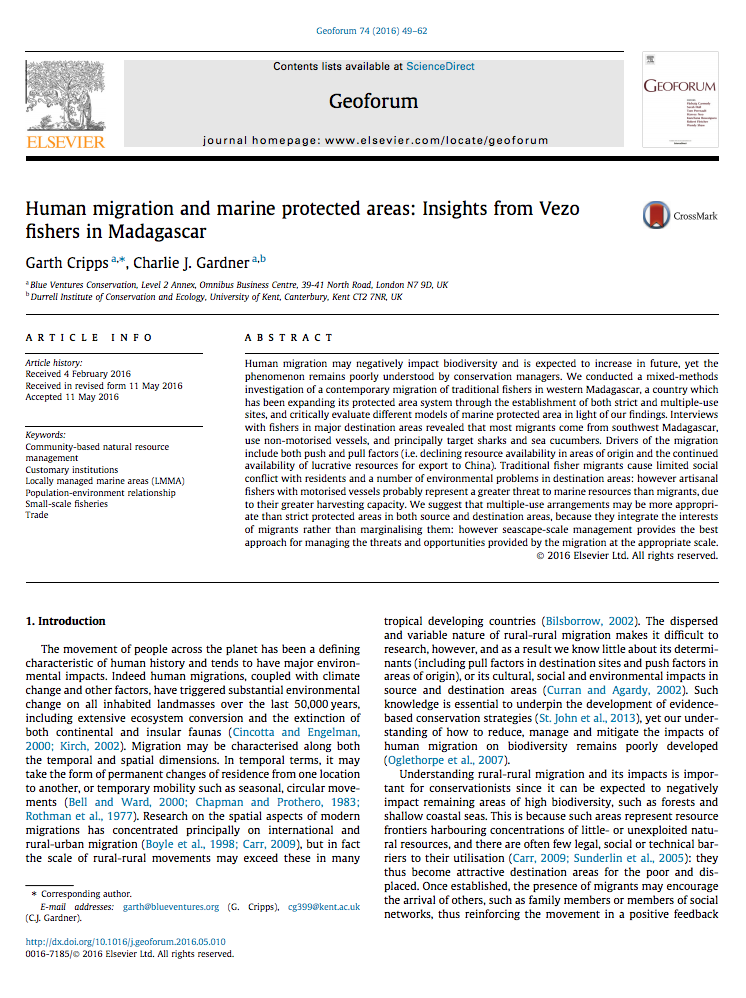Highlights
New markets and declining resources have transformed traditional fisher migration. Migrants now target sea cucumber and shark fin for Chinese markets. Strict protected areas do not address migration drivers. Locally managed marine areas offer an appropriate mechanism to manage migration.
Abstract
Human migration may negatively impact biodiversity and is expected to increase in future, yet the phenomenon remains poorly understood by conservation managers. We conducted a mixed-methods investigation of a contemporary migration of traditional fishers in western Madagascar, a country which has been expanding its protected area system through the establishment of both strict and multiple-use sites, and critically evaluate different models of marine protected area in light of our findings. Interviews with fishers in major destination areas revealed that most migrants come from southwest Madagascar, use non-motorised vessels, and principally target sharks and sea cucumbers. Drivers of the migration include both push and pull factors (i.e. declining resource availability in areas of origin and the continued availability of lucrative resources for export to China). Traditional fisher migrants cause limited social conflict with residents and a number of environmental problems in destination areas: however artisanal fishers with motorised vessels probably represent a greater threat to marine resources than migrants, due to their greater harvesting capacity. We suggest that multiple-use arrangements may be more appropriate than strict protected areas in both source and destination areas, because they integrate the interests of migrants rather than marginalising them: however, seascape-scale management provides the best approach for managing the threats and opportunities provided by the migration at the appropriate scale.

















